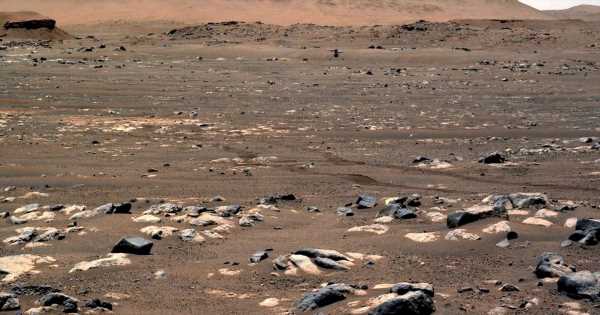Humans could live on the Red Planet after boffins extracted oxygen from Martian rock.
A colony on Mars has long been the stuff of science fiction. But a lack of oxygen there means it has never been realistic in real life.
The main challenge has been finding a way to create oxygen using only materials already there – rather than transporting them from Earth at huge cost. Now scientists believe they’ve cracked it – with Martian meteorites and an AI chemist.
READ MORE: Russia dubs 'expired politician' David Cameron's appointment as 'buffoonery'
For the latest news from the Daily Star, click here.
In two months, the AI bot completed a complex process – using decomposing water to produce oxygen – that would take a human chemist 2,000 years. Using five types of Martian meteorite, the AI managed to create a working model that can steadily produce oxygen and withstand temperatures of -37C on Mars.
“The AI chemist innovatively synthesized OER catalyst using Martian material based on interdisciplinary cooperation,” said Prof. Luo Yi, leading scientist of the team behind the new report.
Professor Jun Jiang, from the University of Science and Technology of China said: “This type of research is of wide interest and is under rapid development in organic/inorganic material synthesis and discovery. In the future, humans can establish an oxygen factory on Mars with the assistance of an AI chemist. This breakthrough technology brings us one step closer to achieving our dream of living on Mars.”
And the report's conclusion appears hopeful that humans could actually live on Mars.
-
Putin could go to 'nuclear war with NATO over Sweden', predicts Russian colonel
It states: “This system has demonstrated its ability to perform all required experimental steps, including raw material analysis, pretreatment, synthesis, characterization and performance testing with high precision and also shown its intelligent analysis power in identifying the best formula for a Martian OER catalyst from millions of possible combinations.
“Particularly powerful is the in situ optimization, which seamlessly combines the experimental data and computational data during the synthesis process, greatly accelerating the generation of a reliable model and finding of an optimal formula.”
To stay up to date with all the latest news, make sure you sign up to one of our newsletters here.
Source: Read Full Article




